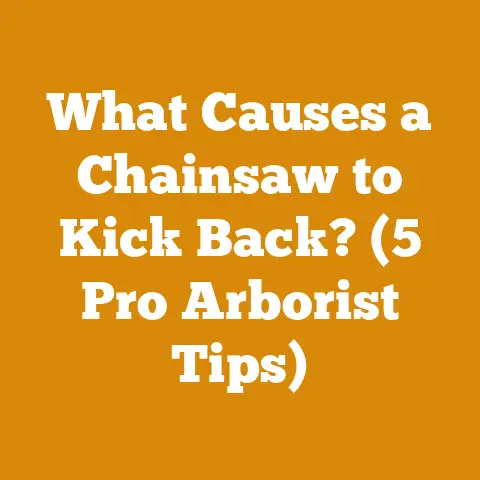How to Enclose a Porch DIY (5 Pro Tips for Woodworkers)
Enclosing a porch is a project that uniquely blends the worlds of woodworking, home improvement, and even some elements I’ve learned from years of experience handling timber. It’s not just about slapping up some walls; it’s about creating a seamless transition between the indoors and outdoors, extending your living space, and adding value to your home. This project, like preparing wood for a cozy winter fire, requires careful planning, precise execution, and a deep understanding of materials.
Over the years, I’ve tackled numerous projects involving wood, from felling trees for firewood to constructing sturdy sheds and workshops. Each project has taught me valuable lessons about the nature of wood, the importance of proper tools, and the satisfaction of creating something lasting with my own hands. Enclosing a porch, in many ways, is like a larger-scale woodworking project, demanding attention to detail, a solid understanding of construction techniques, and a healthy respect for safety.
How to Enclose a Porch DIY (5 Pro Tips for Woodworkers)
1. Planning and Preparation: The Foundation of Success
Like selecting the right tree for firewood, careful planning is the cornerstone of any successful porch enclosure project. Rushing into construction without a well-defined plan is a recipe for frustration and potential problems down the line. This stage is all about envisioning the final product, assessing your existing structure, and gathering the necessary information to execute your vision.
1.1. Defining Your Vision: What Do You Want to Achieve?
Before you even pick up a hammer, take some time to clearly define your goals for the enclosed porch. Ask yourself these questions:
- What will the enclosed porch be used for? Will it be a sunroom, a screened-in porch, a three-season room, or a fully insulated living space? The intended use will significantly impact your design choices, material selection, and the level of insulation required.
- What is your budget? Enclosing a porch can range from a relatively inexpensive project using basic materials to a more costly endeavor involving high-end finishes and advanced features. Establishing a budget early on will help you make informed decisions about materials and scope.
- What are your local building codes and regulations? Contact your local building department to determine if permits are required for your project and to understand any specific regulations regarding porch enclosures. Ignoring these requirements can lead to costly delays and fines.
1.2. Assessing the Existing Structure: A Critical Evaluation
Thoroughly inspect your existing porch to identify any potential issues that need to be addressed before you begin construction.
- Foundation: Check for cracks, settling, or other signs of damage. A solid foundation is crucial for supporting the added weight of the enclosure.
- Framing: Inspect the existing porch framing for rot, insect damage, or structural weaknesses. Replace any damaged or compromised components before proceeding.
- Roof: Ensure the porch roof is in good condition and adequately supports the enclosure. Check for leaks, sagging, or damaged shingles.
- Dimensions: Accurately measure the dimensions of the porch, including the height, width, and depth. These measurements will be essential for creating accurate plans and ordering materials.
Personal Story: I once worked on a porch enclosure where the homeowner had neglected to inspect the existing foundation. After we had framed the walls, we discovered significant cracks and settling. We had to dismantle a portion of the framing and reinforce the foundation before continuing, adding weeks to the project and significantly increasing the cost. This experience taught me the importance of thorough assessment before starting any construction project.
1.3. Creating Detailed Plans: The Blueprint for Success
With your vision defined and the existing structure assessed, it’s time to create detailed plans for your enclosed porch. These plans should include:
1.4. Material Selection: Choosing the Right Wood
Choosing the right wood for your porch enclosure is crucial for its durability, longevity, and aesthetic appeal. Like selecting the right wood for firewood – hardwood for long burns, softwood for easy ignition – different wood species have different properties that make them suitable for different applications.
- Framing Lumber: Pressure-treated lumber is essential for framing the walls and floor of the enclosure, as it is resistant to rot and insect damage. Common options include pressure-treated pine and fir.
- Siding: Choose a siding material that complements your home’s existing architecture and provides adequate protection from the elements. Options include wood siding (cedar, redwood, pine), vinyl siding, fiber cement siding, and brick veneer.
- Interior Paneling: For interior walls and ceilings, consider using wood paneling, drywall, or a combination of both. Wood paneling adds warmth and character to the space, while drywall provides a smooth, paintable surface.
Data and Insights: According to the USDA Forest Service, pressure-treated lumber can last for decades when properly installed and maintained. Choosing high-quality pressure-treated lumber is a worthwhile investment that will protect your porch enclosure from rot and insect damage.
2. Framing: Building the Skeleton of Your Enclosure
Framing is the process of constructing the structural framework of your enclosed porch. This involves assembling the walls, roof, and floor using lumber and fasteners. Accurate framing is essential for ensuring the stability and integrity of the enclosure.
2.1. Building the Walls: Straight, Plumb, and Square
The walls are the backbone of your enclosed porch. Follow these steps to build strong, straight, and plumb walls:
- Layout: Mark the location of the walls on the existing porch floor using chalk lines.
- Cut the Lumber: Cut the lumber for the wall studs, top plates, and bottom plates according to your framing plan.
- Assemble the Walls: Assemble the wall frames by nailing or screwing the studs to the top and bottom plates. Ensure the studs are spaced according to your framing plan (typically 16 inches on center).
- Raise the Walls: Carefully raise the assembled wall frames into position and secure them to the existing porch structure using nails or screws.
- Plumb and Brace: Use a level to ensure the walls are plumb (perfectly vertical). Brace the walls with temporary supports to hold them in place while you work.
Tool Specification: A high-quality framing nailer can significantly speed up the wall framing process. Look for a nailer that is lightweight, durable, and has adjustable depth settings.
2.2. Framing the Roof: Ensuring Proper Support and Drainage
The roof framing is crucial for supporting the weight of the roofing materials and ensuring proper drainage of rainwater and snow.
- Determine Roof Pitch: The roof pitch (the angle of the roof) will affect the style and appearance of your enclosed porch. Consider the existing roof pitch of your home and choose a pitch that complements it.
- Cut the Rafters: Cut the rafters according to your framing plan, taking into account the roof pitch and the overhang.
- Install the Rafters: Install the rafters by attaching them to the top plates of the walls and to a ridge board (a horizontal beam that runs along the peak of the roof).
- Sheathing: Cover the rafters with sheathing (typically plywood or OSB) to create a solid surface for the roofing materials.
Safety Consideration: Working at heights can be dangerous. Always use appropriate safety equipment, such as a ladder with a safety harness, when framing the roof.
2.3. Framing the Floor: Creating a Level and Stable Surface
If your existing porch floor is not level or stable, you may need to frame a new floor using pressure-treated lumber.
- Install Joists: Install joists (horizontal beams that support the floor) between the foundation walls or support posts.
- Sheathing: Cover the joists with sheathing to create a solid floor surface.
Case Study: I once worked on a porch enclosure where the existing floor was significantly sloped. We decided to frame a new floor using adjustable support posts to create a level surface. This not only improved the appearance of the enclosed porch but also made it more comfortable to use.
3. Insulation and Weatherproofing: Creating a Comfortable and Energy-Efficient Space
Insulation and weatherproofing are essential for creating a comfortable and energy-efficient enclosed porch. Proper insulation will help keep the space warm in the winter and cool in the summer, while weatherproofing will protect it from the elements.
3.1. Insulation: Choosing the Right R-Value
The R-value of insulation measures its resistance to heat flow. The higher the R-value, the better the insulation. The appropriate R-value for your enclosed porch will depend on your climate and the intended use of the space.
- Walls: Consider using fiberglass batts, spray foam insulation, or rigid foam insulation for the walls.
- Roof: Insulate the roof with fiberglass batts, spray foam insulation, or rigid foam insulation.
- Floor: If your enclosed porch has a crawl space underneath, insulate the floor with fiberglass batts or spray foam insulation.
Original Insight: Spray foam insulation provides excellent insulation and air sealing, but it can be more expensive than other options. Fiberglass batts are a more affordable option, but they require careful installation to avoid gaps and air leaks.
3.2. Weatherproofing: Sealing Out the Elements
Proper weatherproofing is crucial for protecting your enclosed porch from moisture, wind, and pests.
- Seal All Gaps and Cracks: Use caulk or weatherstripping to seal any gaps or cracks around windows, doors, and other openings.
- Install Flashing: Install flashing around windows, doors, and roof penetrations to prevent water from entering the structure.
- Wrap the Walls: Wrap the exterior walls with a weather-resistant barrier (such as Tyvek) to protect them from moisture.
Benefit: Proper weatherproofing will not only protect your enclosed porch from the elements but also help to reduce energy costs by preventing air leaks.
4. Windows and Doors: Letting in Light and Fresh Air
Windows and doors are essential for letting in natural light, providing ventilation, and creating access to your enclosed porch.
4.1. Choosing the Right Windows: Style, Efficiency, and Functionality
There are many different types of windows to choose from, each with its own advantages and disadvantages.
- Double-Hung Windows: These windows have two sashes that slide vertically, allowing for ventilation from the top or bottom.
- Casement Windows: These windows crank open outward, providing excellent ventilation and a clear view.
- Sliding Windows: These windows slide horizontally, making them a good choice for tight spaces.
Strategic Advantage: Energy-efficient windows with low-E coatings and argon gas fills can significantly reduce energy costs by minimizing heat transfer.
4.2. Selecting the Right Doors: Security, Style, and Access
Choose a door that is both secure and aesthetically pleasing.
- Entry Doors: These doors are typically made of wood, steel, or fiberglass and provide security and insulation.
- Sliding Glass Doors: These doors slide horizontally, providing easy access to the outdoors and a wide view.
- French Doors: These doors swing open inward or outward, adding elegance and charm to your enclosed porch.
Cost: The cost of windows and doors can vary widely depending on the style, size, and materials. Shop around to find the best prices and consider energy-efficient options to save money in the long run.
4.3. Installation: Proper Techniques for a Secure Fit
Proper installation is crucial for ensuring that your windows and doors are weather-tight and function correctly.
- Prepare the Opening: Ensure the opening is square and level.
- Insert the Window or Door: Carefully insert the window or door into the opening.
- Shim and Level: Use shims to level and square the window or door.
- Fasten: Fasten the window or door to the framing using screws or nails.
- Seal: Seal the gaps around the window or door with caulk.
5. Finishing Touches: Adding Style and Personality
The finishing touches are what will transform your enclosed porch from a basic structure into a comfortable and inviting living space.
5.1. Siding: Protecting and Beautifying the Exterior
Choose a siding material that complements your home’s existing architecture and provides adequate protection from the elements.
- Wood Siding: Wood siding adds warmth and character to the space, but it requires regular maintenance.
- Vinyl Siding: Vinyl siding is a low-maintenance option that is available in a variety of colors and styles.
- Fiber Cement Siding: Fiber cement siding is a durable and fire-resistant option that mimics the look of wood.
Technical Detail: When installing siding, be sure to follow the manufacturer’s instructions to ensure proper installation and prevent moisture damage.
5.2. Interior Finishes: Creating a Comfortable and Inviting Space
Choose interior finishes that reflect your personal style and create a comfortable and inviting space.
- Wall Paneling: Wood paneling adds warmth and character to the space.
- Drywall: Drywall provides a smooth, paintable surface.
- Flooring: Choose a flooring material that is durable, easy to clean, and comfortable underfoot. Options include tile, hardwood, laminate, and carpet.
Skill Level: Installing drywall and flooring can be challenging for beginners. Consider hiring a professional if you are not comfortable with these tasks.
5.3. Details that Matter: Trim, Paint, and Lighting
Small details can make a big difference in the overall look and feel of your enclosed porch.
- Trim: Add trim around windows, doors, and the ceiling to create a finished look.
- Paint: Choose a paint color that complements your interior finishes and creates the desired mood.
- Lighting: Install lighting fixtures that provide adequate illumination and create a warm and inviting atmosphere.
Practical Next Steps: Once you have completed the finishing touches, step back and admire your work. You have successfully enclosed your porch and created a valuable addition to your home. Now, furnish it, decorate it, and enjoy it!
Enclosing a porch is a rewarding project that can add value and enjoyment to your home. By following these five pro tips, you can ensure that your project is a success. Remember to plan carefully, use high-quality materials, and pay attention to detail. With a little effort and patience, you can create a beautiful and functional enclosed porch that you will enjoy for many years to come.






